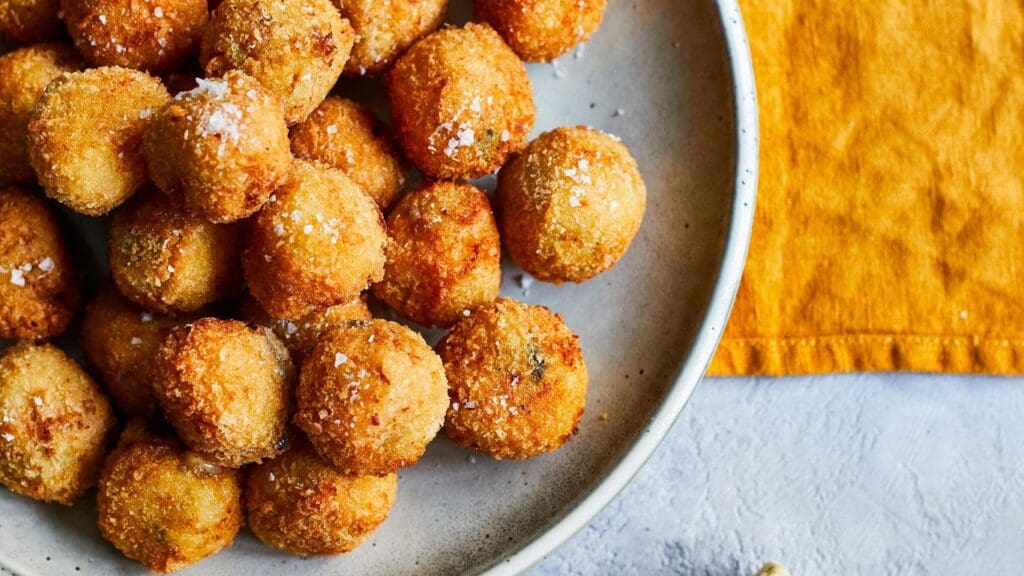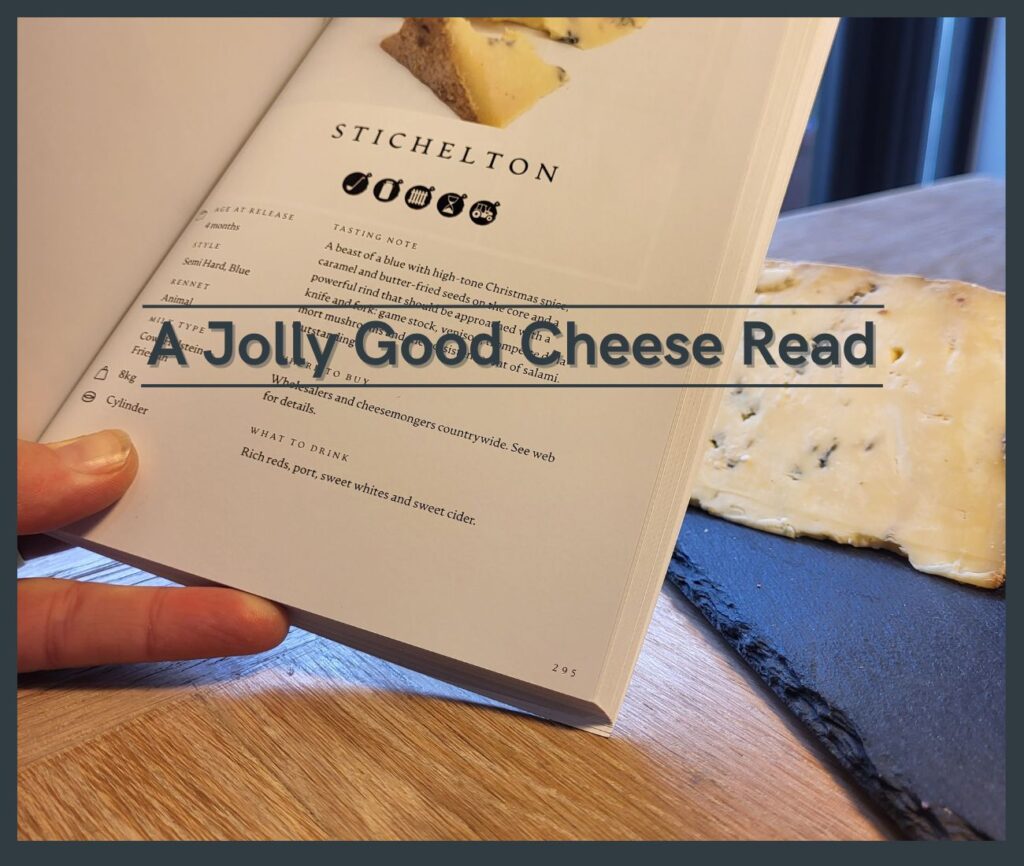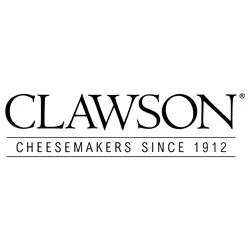TNCN Meet Mary Quicke – the iconic purple wearing larger than life Master Cheddar Maker. Quickes have been continuously farming in Newton St Cyres, Devon since the 1500s and Mary’s cheese is one England great Cheddars. Charlie talks to her about how she influences the flavour of her cheeses outside the dairy, including breeds of cows, managing her pastures and her beautiful west country weather.
Streamed live on Oct 13, 2020
GUIDE TO TASTING CHEESE
Learn about the four stages of tasting cheese and how to take tasting notes with this definitive guide to tasting cheese.
Master Cheddar Maker Mary Quicke Episode Video Transcript
Good evening everybody, It’s Tuesday Night it’s Cheese Night and I have the delectable the fantastic the amazing the awesome the iconic the not wearing purple tonight Mary Quicke. Good evening Mary how are you [Laughter] uh yeah you’re not wearing your fantastic red hat what happened, I’ve been doing yoga. oh the yoga has got to the west country has it, so i’m very chilled so very chilled and ready for some cheese. marvellous.
Right for everybody who’s watching tonight we are talking uh Mary Quicke has very graciously come on he’s going to tell us about how flavors come into cheese uh outside the dairy outside the dairy from farming to milking to terroir and how she i mean let’s start off by mary tell us tell us about your farm how have you been there what’s the what’s the story okay so my family have been on this farm for 14 generations well i think it’s about 15 37 but we say 1540 to be to be on the safe side and that was 14 stop 15 37 yeah now my my my history’s a bit patchy but that’s did you knit your lands off some monastery did henry viii do your favor um well henry yates did somebody a favor and their daughter was married by this aspirant uh young quick acquaintance he was quick off the mark who’s actually one of the few saxon families who retained land through the conquest wow norman conquest so 15 37 let’s call it 15 minutes that’s 500 years you’ve been making cheese not quite not me personally i know cheese is great for longevity but not quite that not quite so you haven’t you haven’t got a 15 37 cheese up your sleeve that you’re going to reveal 17 years cheese has been made on this farm you know dairy is what you would have done yeah in this farm over the years and and um but my it was my mum who built this cheese dairy in 1973. i’ve just been to see my mum and i said i’ll tell them all about you building the dairy man see wow so but they would have made cheese but i mean people made cheese forever whether there were cows there were cheese whether a sheep there was cheese there was goats there was cheese so you’d have been making every house on the farm there is all uh uh in the farmhouse there are dairies yeah either with slate or with marble depending on how post you are and that’s where you would have made your you know in a cool place on the north side of the building um beautiful building material in this part of the world is cob which is you know two foot three foot thick walls of of subsoil and straw yeah which keeps everything beautifully even in temperature great place for making cheese so so there is no better pedigree than yours is that what you’re saying you are legitimately the queen of cheese well there are there are so many amazing people in cheese i couldn’t claim that title attack now we’ve actually got sarah on tonight hello sarah i’m just going to say this because she calls herself queen of cheese um so obviously we’re going to have to have i don’t know what the collection now for queens is um a cabaret just saying uh uh we have lots of screens of cheese and everybody’s welcome um okay so tell us about your pastures what what have you got what you know big field small fields lots of hedges hills dales what’s going on lots of i mean a beautiful valley watered by the river creedy um which is a which drained off dart has drained off dartmoor so when dartmouth was twice as big as the himalayas but it’s now not it’s just little little hills now and and we live in this beautiful valley which is a mix of the red soil and and clay and the beautiful alluvial mix of the two which is where our spring herd grazes so we’re really grass-based that’s a big big deal for us our cows are grazing from well the target is valentine’s day till christmas well just till christmas eve then that’s when we dry the last caves off last year we didn’t make it to christmas because it was so wet but they came they went out in january in other words so we couldn’t they the grass was growing before valentine’s well before valentine’s day so slow down slow down remember we’ve got people who aren’t farmers listening so when you mean christmas day to valentine’s day you are keeping your cows on the fields not in the barns for what is that 46 weeks a year yeah i’ve all got about 65 days or something yeah and they come in on christmas eve you know they do midnight mess and then it’s into the barns until valentine’s day i have to say it’s very wise thinking the six weeks of the year i dislike most so that christmas to valentine’s day let’s park that off they’re off watching their box sets and then they’re back out on the spring grass yeah well and the spring heard by that time is dry blessing their their holidays their sort of pregnancy at late pregnancy holiday is spent outside eating eating crops okay let’s break that out as well so your spring hood how many herds you got to hurt a spring herd so we want to have even milk in the cheese dairy and even amount of we don’t want ever too much late lactation milk because it it doesn’t taste right that’s not right so good for cheese making so we want a spring herd six months which carves uh february and march and the awesome herd carves august and september so together those two sign curves make sure you’re kind of more or less flat even each other out i don’t know what i’m doing with my hand here but that kind of thing and we’ve never got too much late lactation milk uh because that’s too fatty the proteins are too weak the flavors aren’t correct so how long is this how long do they milk for some of the eight eight months or something um three well 305 days i mean for as long as we are ten lunar weeks nine calendar sorry ten lunar months nine calendar months and they they will always have six weeks off for their you know pre-pregnancy there they don’t they want to grow the calf they want to have a chill and a rest and to chat tonight give them a break you give them a break so are they roughly equal sizes and how many in your herds uh three sorry i didn’t answer 300 cows in each wow so you’ve got 600 ladies wandering around your farm beautiful beautiful mixed and because we want them to graze outside not so much yields not so much milk uh we want them to be able to walk out to the pastures and there and we need them to be really fertile little girls and great for cheese making so we’ve got this crossbred mix of what oh well friezen freezing a little bit of holstein you know the black and white normal dairy cow we cross those with swedish red okay uh which is looks like a red and white version like it looks like an airship okay there are a good reason well i can go into i can go all nerdy on you about the different breeds and then also some mon belliard teeny bit of jersey you know we look at the cows how are they walking how their how is their milk what are the flavors like in the cheese you know because each breeze got a subtly different contribution to flavor and we taste and we go yeah well maybe a little bit we need a bit of all uh you know the cows aren’t looking quite strong enough we need to put a bit of strength in them with the monte monbelli yard and the montpelier brings a very distinctive protein so if i put four glasses of milk in front of you i put a friesian holstein in montbelliar and uh swede and didn’t didn’t tell you which is which would you be able to tell the difference from the milk that’s really interesting it’s probably more about well certainly i mean certainly a jersey is terribly distinctive isn’t it yeah now what i don’t know actually is the the swedish red airship they’ve got very very teeny weeny fats and so i think they taste more buttery in the mouth okay those are all crossbreds when canopy’s over we should do this we should get a whole bunch of uh academia cheese people and we’ll have a milk off and we’ll get lots of different breeds of milk and we’ll see if we can taste the difference well and what’s really interesting is how different grass-fed milk is you know the grass-fed milk you know you’ve immediately got i think the technical definition is cow’s breath now for those of us who maybe haven’t had the intense privilege of sniffing a cow’s breath that may not be a very attractive sound we will now queue up for it that’s clearly the right we should right after we’ve drunk their milk we’re gonna go and smell cow’s breath and it’s warm animally with some lovely gentle sort of grassy notes um and it’s that kind of flavor you get coming through kind of the minute like it’s really interesting you taste cheese that has from where the cows have been out just for a day and the milk the next morning the cheese the next morning will have some of those grassy flavors grassy notes to them so i mean i’ve always understood that that is that i mean we’re dotting around here a bit but that’s one of the big challenges for the cheese makers the moment when you have the big transition from the cows being inside to outside because on the lead into christmas you’re already beginning to feed them nuts and supplement their feed in the fields so the which continues into the barn so there isn’t that step change in the same way but coming out you have that wham bam silent do you do silence do you do signage we do we do do so for the for the autumn herd you do so but of course the grass at that i mean i don’t know if you’ve noticed what the grass is like on valentine’s day it doesn’t grow that fast so we are quite gently easing them off i mean it gets to there’s a day in in grazing terminology called magic day which is where the cows where the amount or that the cows want to need to eat and want to eat is equal to the growth rate out there okay when’s that usually late march early you know depends and depends you know on your if you’re up a hill it’ll be eighteen but after that the cows are eating more than the grass is growing yeah and and so they’ll be largely on grass we we’ve then a little bit of cake in the pile a few nuts in the parlor because you know come on girls this is where you want to be i mean when you’re when you’re first carved for those of us who have lactated we know we need milking just no kidding sorry so a bit a bit female but hey i’m not commenting is basically all about the uh of the females all about the females well such is life unfortunately so you’ve got these so you’ve got these cows you’ve got 300 in a herd they’ve all got to be within walking distance of their parlor there is no other way to milk a herd so you must have two milking piles yeah and you have the one down in in your in your main farm i understand the valley yeah down in the valley and the other is up on the hill and you’ve chosen um a slightly unusual um dairy for the second one it’s a it’s a strip down dairy it’s it’s it’s it’s almost open to the elements for your hilled area yeah it is it’s a parlor with a view it’s um it’s got no sides to it it’s got a lid like a sort of bicycle shed lid but i uh opened to the outside and i and that’s that’s a new zealand inspiration i remember visiting it you you know you were quite excited about the way that it would you know it’s a lower environmental footprint and stuff like that yeah well because the cows are outside you know they really don’t want it don’t like particularly coming inside you know it’s dark or darker so you know something that’s really easy and attractive for them to just move through on their work get get milk you know release it release themselves of their milk and then back out to pasture again so how much um uh so how what is it what’s the yield on your cows i mean you know we a high yielding one is sort of 30 plus liters a day you know you hear of 40 liters a day for some big austin friesians what do you reckon you get um well but uh i mean obviously different stages of lactation just over 20 probably but it’s right you know it’s quite good solids in it yeah i mean we might get up as high as 30 for four four one herd for about three days but um you know and they’re really cooking on gas and and you know they’re full steam ahead and then it falls off again yeah i mean they come to a peak at six weeks after carving and then it gradually gradually moves down from there and but the the other herd will peak at some you know 20 25. 20 yeah 25 probably and they um uh um and they will and the milk has a different flavor at different parts of that lactation so enough about the cows for a second let’s talk to you come on come on come on let’s bring it back let’s bring it back then you’ve got three cheeses you’ve sent me marvelous and you have them on the label and we’re gonna have to talk about this gentleman a bit later your little um kind of i don’t know what he is that kind of horsey with horns that you’ve got knocking around we’ll come back uh but we have buttery mature and vintage so talk to me before we tuck in and you talk talk to them about how you guide flavors how do you measure them how do you do your grading so that’s the output you know you know you’ve got to control it through your feed in your farm but what are you looking for in the output and also starters and the make but we can talk about that but actually in terms of so we grade all vats at three months old we take a court three months old and at that point we will select out an intensely buttery flavor and it’s relatively rare actually the last grading was amazing we had buttery buttery butter buttery notes and very low acidity and just a really sort of buttery note there and that that will go to our butter buttery and that’s three months old well this cheese is um was made on the seventh of may of this year uh and so this is the one we’re tasting yeah so that is now 7th of may oh it’s a little bit older than three months may june july august september so that’s just sort of for four months four months six months yeah no no no five months five hi well uh we’re in the tenth month and it was made in the fifth month five and a half months i’ll i’ll set worthy five and a half so so this is your youngster this is your your youngest one um and you have called it buttery because those are the dominant flavors yeah that’s right and then mature we we would need to be at least 12 months old but what with covid and we dropped the temperature in our store so it wouldn’t break away but this was made on the 6th of november uh um so nearly 2 years old and normally we would normally have a month old are we tasting now charlie or i think you’ve got that wrong i think your mature is a 12-month cheese and your vintage is 24. no i’ve actually i’ve been but we’ve we’ve dropped the temperature in our cheese store to suppress it that was made in um march of the of the of of the previous year okay okay i’m gonna just eat some cheese because i’m getting confused by these dates so your buttery works out at roughly five to six months that’s where you’re going yeah that’s very easy yep it’s um and the idea is you get this intense buttery hit at the back it is and you get that kind of it’s not a tang but it’s a kind of salivation on the underside of the tongue so that’s what we’re looking for very very very young so you’ve got almost no difference and cheese flavor to the right towards the rind it’s you know slightly darker towards the rind so you you get some elements of um you know some element of sort of drying out i mean why cheese makers like to cut nose to rind is because uh with a rinded cheddar cheese loses moisture from the rind so it’s it’s so you see it more in the mature cheddar it’s darker towards the uh the the middle towards the edge and so it’s lost moisture what drives cheese maturation is moisture so you effectively get completely different cheeses at the center halfway back and under the rind okay can you expand on that drying out dries maturation what do you mean by that well the processes of maturation maturation is you know a slow and hopefully beautiful breakdown of the of the of the sugars of the lactose in the milk uh through lactic acid through to you know a complete breakdown of that it’s all on its way to carbon dioxide and water of course like all of us are and the proteins on their way uh you know that they’re being they’re being slowly um uh and same as the fads and each of all of those processes happens much faster in the presence of of moisture so if you you know a very moist cheese like a brie you know six eight weeks and you’re done a very very dry cheese like a gruyere or a parmigiano-reggiano very very very dry well kind of as dry as our vintage or even drier than that those maturation processes will happen very very slowly so in a in a cheese like this picked up the vintage where you’ve got it’s a lot going to be with a cloth-bound cheese yeah there’s going to be a lot more moisture lost immediately under the rind yeah so those flavors will be quite different to the flavors at the heart of the cheese which has got a lot more moisture and of course you get the other impact of the rind the cloth-bound brine with gorgeous aroma which is the aroma of our cheese store and that there’s a whole specific ecosystem that belongs to our farm yes that grows that grows on that rhine so you not only have the the the differential moisture creating the different cheeses but you’ve also got this amazing amazing amazing ecosystem of molds and fungi and just great stuff that belongs to this farm and that is where a lot of our distinctive flavors come from so this is about building up a flavor profile which you manage for like a better word that belongs to absolutely nobody else you’ve got your herd that’s your choice so different soils produce different flavored milks just saying um and and do you have different soil do you have different soils about your farm where you can see that in the milk yeah yes i mean then we’ve got the well we’ve got the red soil where the spring herd is based also and it’s got some clay as well but mainly on the red and the autumn herd is based on an alluvial mix of the two and can you tell some kind of they’re definitely related to mean it’s not yeah not completely different yeah yeah and can you tell you think you can taste that in the milk that comes from the milk or comes through more in the cheese yeah well i mean it’s really interesting i mean tasting milks from different individual farms and the milks do taste you know subtly there’s milk on one level milk is milk but they do taste subtly different and i i’m i you know how much certainly there’s the grass fed certainly there’s a stage of lactation certainly there’s a breed element and then and then you know i i suspect that part of that is soil as well so if you were to put those in order as in what’s got the biggest influence on the flavor of uh of one chuckle um what would you care if you could only if you’re going to pull the lever on one of those variables which one would you want to keep your hands on most highly i think grass fed’s really really important it gives a whole layer of complexity that you just simply don’t get with certainly may in my view with maize feeding or or even with grass silage because i remember i think hey we don’t you know devon’s not a great place for growing for hay you know which is why all of our cheese making styles don’t rely on hay fed milk but i think hey you probably would get quite a lot of those aromatics but some a lot of the aromatics have already dried out in hay so i remember you talking to me when i visited your farm one of the times of busy farm where you use different grazers to manage which bits your cows are feeding on it’s like you don’t want them feeding them too low down the grass or i can’t remember you had some phrase did i completely make that up or is that something you were actually doing no no it’s really important to us i mean and that’s partly about making sure there’s enough grass ahead of the cows so that we can graze right the way through the season you know they’re on these individual little paddocks new bit of grass every 12 hours and if they just eat the top leafy part it’s not very fibrous so the milk will probably lack fat so that you would then tend to get quite a sort of hard firm curd just the ratio of the fat and the protein too much casein not enough that kind of thing uh yeah yeah too much protein probably and then right and then at the bottom or if you if you think right with these grays right down and you’ve left them then it’s much more stalky right at the bottom and and stalky is more fiber and more fiber creates more fat and more fat brings over more you know both it can be more luscious but to excess it brings too much moisture through into the curd and that can then create a rather acid curd so there’s a kind of goldilocks bit of the grass blade that you you i mean how do you make sure they only eat that bit do you get somebody else to eat off the top and you move them on before they get to the bottom how does that work well you you measure the grassland and say we turn them out in when it’s um probably about 2 700 kilos of dry matter a hectare which is or we go around measuring the grass and we’ll have them graze down ideally to 1500 kilos of dry matter a hectare i’m just going with that i obviously have no idea how you would say looking at a field oh that’s certain dry mattress but you know well we’ve got a we have got something we call the pasture meter which you a plonker that you plonk down a circular thing on a spring and you it counts how far how far up the the the the barrel of this thing that the the circular ring goes right but you know and then you can train your eye to see what’s going on once you’ve measured it a few times you can sort of get a feel for it kind of thing yeah and we do like to keep measuring so that that keeps it consistent across across different people measuring the grass amazing amazing okay back to the cheese back to the cheese so we’ve got our easy to eat slightly sweet buttery um no no no no no big aromatics no farmyard um no mustiness um kids would love it kind of buttery special six months where are we going next well the material okay we have suppressed the maturation on this because um because of covid so the the store is quite cold right um i’m just going to say that in layman’s language you’re slowing down the the cheese you’re slowing it down by chilling it down so you hold the store at what temperature normally well we would normally hold it at 10 and it’s now at eight okay two degrees so even before we get next year before the tape texture is completely different yeah lost quite a lot of moisture you know that will be about maybe 36 moisture this one will be down to about 32. okay moisture and it will have lost it and if you taste you know taste a bit close to the middle and if you taste a bit halfway back i’m on it hang on i’ve done the close to the middle bit now looking for the halfway back bit and you know if you squidge it you can see it’s a bit firmer still oh yeah definitely and actually you can squidge it down the piece and it feels firmer at the edge quite noticeably and then take a squidge under the rind take a bit from under the rind hmm the other characteristic because it’s so much drier you need to chew it more and allow more moisture to get from your mouth into the cheese for the flavors so relatively i think that’s that almost because it’s a little bit dryer and you have to you get more if you like there are more layers of flavor not necessarily about the flavor but about just the time you spend chewing it and it takes to release so so take this cheese and track it back to your farm what are we so what what what month are we tasting here so this one here as it happens is um um uh 6th of november 23 months ago and um um so you’ve got so it’s got some a little bit drier uh because it’s it’s uh of that age and you’ve got that those impacts coming towards the end of lactation with the cows or sorry coming towards the end of being out at grass the awesome herd will be um so this milk would be largely from the autumn herd so that they’re now in full milk okay we’re getting them in calf at this time they’re really lots and lots and lots of milk and they’re going round their last round of the grazing there i might be making this up because you just told me but i think it tastes a bit um autumnal i think it has a sort of dry leafy kind of flavor to it um uh but i just could because you’ve told me it is and i’m making it up which it’s so it’s such a flavor and that’s one of the things i think it’s really important you know with the academy of cheese we’re looking to develop people’s cheese vocabulary but it’s also giving a real primacy i think to your own taste buds the purpose of training yourself and using those words is not so you taste the same as me but so we’ve got a common language that we can speak about it yeah what what you taste matters most and we know i i sometimes feel that with the sort of more dogmatic taste programs more in sort of wine than cheese there’s there’s a right and a wrong and i feel that that’s got a certain sadness to it because i want to hang on to my experience the cheese i want to know what you’re tasting and i want to know perhaps what it’s believed should taste like should um but i don’t want to lose my perspective in that journey yeah and i mean for me i’m getting some acidity there and well what we’re looking for in these cheeses as a balance of our flavors and our flavor families are sharp oniony grassy uh then umami buttery and then the other flavor fam of family oh my god umami and buttery and then there’s sort of uh sorry and then there’s sort of set your savory savory mommy so buttery caramelly sorry that was why i was getting muddled buttery caramelly and then the other flavor family would be sort of savory meaty brothy umami and what i’m looking for in our best cheese will be and and a beautiful complex unfolding balance of those three flavor families so you want all three favorite permanent presents it’s not a it’s not a case of some cheese is lean this way and some cheesely in that way it’s that’s those are the sort of common best flavors for your cheese well but if we go and we’ve gone to the vintage well before we move on i just want to make a comment about this the mature um those buttery caramel flavors for me only really appear once i’ve got a lot of moisture in the mouth and it’s sort of in the back half of the flavor [Music] and what i’m really interested in is if you like that timing of flavor how it occurs with it on one’s palette you know we tried to do some visual representation well first you get sharp and then you get savoury and then at the end uh you know you may be in that so unfolding butteriness because you know i mean i’m what i want with our cheese is you get lots of fun out of it yeah yeah it just keeps coming it just likes that person who goes and another thing and then just do something new right um i am on a ridiculous diet at the moment which fortunately ends tomorrow night so i can’t wait for that so i’ve got nothing to clear my palate but you’ve got some ciders i believe yeah well i i thought i’ve got really interested in the apple i mean that thing what what grows together goes together and i’m trying with some smith haynes cider so it’s a sort of traditional method okay uh and um it’s got some nice tannins in it a little bit of sharpness um i don’t know what apple right well it’s two a 2017 vintage so it’s um well if you speak to the cider makers they will say with complete confidence and the history to prove it that we invented the method champion wise in this country to bottle ferment cider and that dom perignon was a johnny come lately and uh nothing to do with the french at all but the french disagree with it right yes you’re now allowed to go vintage mary tell us about your vintage oh the vintage well this this occurred it ca it occurred because we were keeping some cheeses um for our farm shop and in foot and mouth disease in 2001 we closed our farm shop we didn’t want anyone coming on to the place because of um uh you know fear of infection of our cows and on the nose you can get this sort of caramel there’s some caramelly notes i was about to say this is sweeter which wasn’t what i was expecting it’s not certainly not with a sweet starter um although there are no it’s not it’s not that kind of sugary sweetness or um condensed milk sweetness which is that starter version this is definitely on the caramel um caramel in the spectrum so when we’re grading at 12 months of age which is a selection grading anything that um what we’re looking for is it’s got to be all of those complex flavors i was talking about before but really leading with the with that sort of caramel node it’s fascinating because um when you get most cheddars going up to the 24 age um you expect more savoury notes more acidity more um what i call base notes if i can put it that way um but yours consistently doesn’t it stays in that higher register flavor profile um and just gets more complex and and the and the sweetness heads off into this sort of burnt caramel direction well i think um that’s partly i think because over the years well i mean i i’m not a fan of bitter at all um i’m quite sensitive to bitter so you’ll find for a cheddar very very little sort of bitter notes and also i want these slow unfolding flavors which means lots and lots of steps along the way both in terms of the kind of milk that we’ve got you know the ratio of the fat and protein in the milk but also how we make it is about driving moisture out we make one of the driest curds of a cheddar maker and this will be 29 moisture or something or other as and it loses moisture in the yeah i mean i mean i i don’t i don’t know for sure but i would have put you know farmhouse cheddar at the 12 to 14 month up at the um sort of late 30s percentage moisture not down where you’re talking about well i guess um or when we make typically it’s 36 37 about you know gets down to 34 at 12 months 32 at 18 and then up at this age you know you’ll be under well under 30. so in in waking whiskey they call that the angel share or something don’t they they so what do you call it in cheese making the aroma of our cheese store our cathedral of cheese okay i don’t know it’d be great because i mean it’s the same thing in um making balsamic vinegar isn’t it well but yeah kind of about how is that repetitive um cycling through different different parts and that kind of thing but it’s about losing moisture it is sorry talking with my mouth yeah well i have to say um uh so i’m gonna just lastly before we sort of um sort of have to come to a close on your fantastic company and there are a few hellos actually i’ve got um james from number two said hello where have you gone james you’re up here somewhere um uh he said he had lunch with you in bergamo that was feels a few years ago now that we’re actually allowed out of the country oh i know and bergamo was just the center of you know all of that difficulty i stayed at an airbnb my host and they said it was pretty weird you know just staying in their flat apartment just for months on end um all right so ryder hi james thank you yes hi we’ve got a lot to be repeats there um and uh hello sally um right so if you were to say right briefly what is it about your farm that sets you apart from montgomery’s and queen queens um keems and uh and and wescom what is it what does your farm bring to your distinctiveness well obviously different soil types um uh but i think the key thing is the amount of time we’re spending out grazing i mean keens are largely housed inside uh western have got a sort of normal i believe sort of six months in six months out jamie montgomery uses quite a lot of asylum over may silage um and you know and you have cat the cows that work with those those conditions you know the more inside diet and the more inside the cows are the more you go to in a holstein direction nobody else is using crossbreds as far as i know i’m jamie’s got that herd of jerseys which yeah but he’s not putting them into into his into his cheddars not into the cheddar no terribly difficult to do that um so you know he would have more sort of classic holstein freeze and as as western wood so how would you conclude that that what flavor what is what’s unique about your flavor against the other um cloth ban cheddar makers well i think you’ve got some of these buttery notes um and i think you know the swedish red breed definitely brings that the quite a lot of the you know the the grass-based diet can give quite a lot of fat in the milk but we’ve got a nice strong protein given by both the swedish red and the monbilliard that can really hold that as a good body so you’ve both got i think um well jason hines of neil’s yard said well the thing about your cheeses is that they’re always luscious all right i always think of your cheese as the spring cheese of the crop you know the four or five great cheddars of the west country i think it’s yours there’s the spring one you always have these light sunshine high registered flavors like butter um like the grassy notes in fact this one i’ve gone back to the to the mature and i’m getting even a little bit of pineapple um and i thought you know it’s it’s uh it’s it’s it’s the bird song of cheddar well yeah and and i just feel uh well i’m excited you know i it feels like we’re working with this gorgeously unknowable microflora in the soil of the soil and then we’re this gorgeously unknowable microflora encounters rumens the gloriously unknowable microflora in traditional starters and then the gloriously unknowable molds that sit on the outside yeah you’re both unknowable you know progression of maturation i mean i love the fact that we’re sitting on top of this succession of amazing nobles and we’re just trying to coax if you like well i think it’s like mark michelangelo producing the statue of david out of a out of a piece of marble we’ve got this glorious bat of milk and out of that we’re teasing and and and and coaxing wonderful flavors out of it well on that fantastic note mary um i think we should all go to our beds dreaming of beautiful cheeses in the hand of michelangelo’s david um it’s been fantastic to talk to you you’re an amazing person we love the fact that it’s not just you but generations of of you that have created such great cheese in the west country and i don’t know i speak for the people who are watching say thank you for being one of the most interesting talks we’ve ever had all right um uh i just probably need to um say i don’t know if anybody knows mary is a founding member of the academy of cheese thank you very much for being on that one as well we know you’re passionate across the across the industry um and we’ve got lots of online courses available for those people who might be listening that uh haven’t become academy cheese level one um and i keep promising to do academic use level two online for those people who want it and i promise you we’re gonna start in november sort of mid november time so if you haven’t done it sign up with me or the area all right on that night mary should we say goodbye goodbye goodbye everybody bye great just be here





















